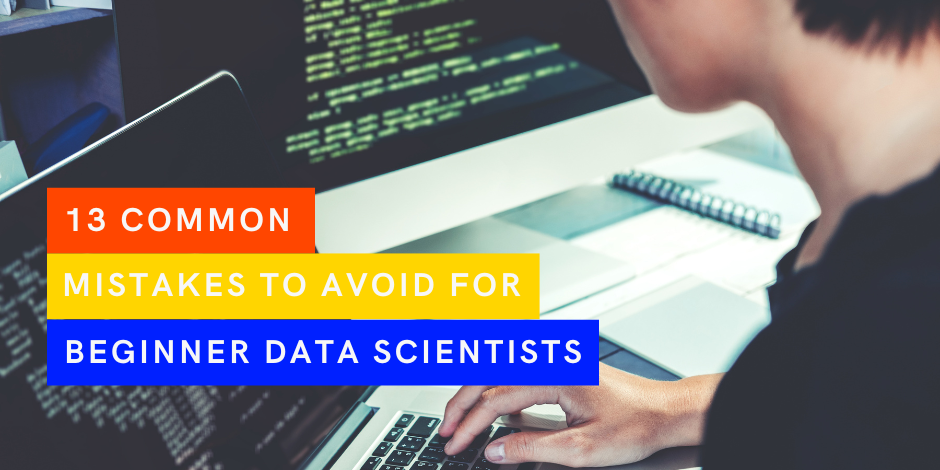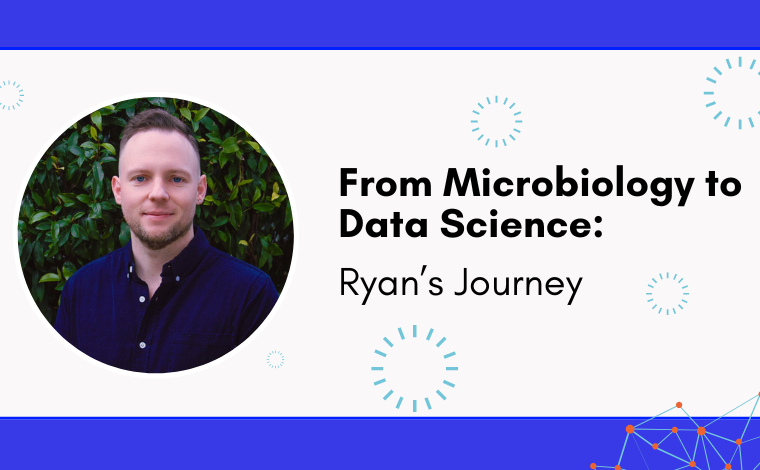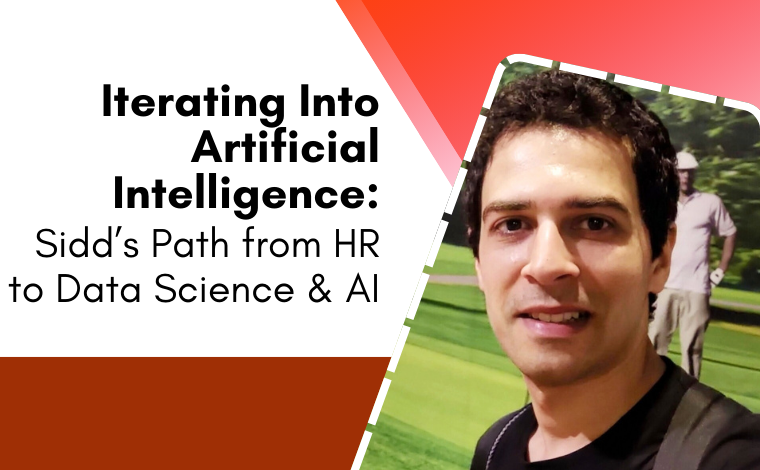13 Common Mistakes To Avoid for Beginner Data Scientists

Stay Informed With Our Weekly Newsletter
Receive crucial updates on the ever-evolving landscape of technology and innovation.
Are you among the many beginner data scientists looking to make your mark in the industry? With the increasing demand for data scientists, now is the perfect time to join the ranks. However, as a rookie, you may be prone to making inevitable mistakes that can be easily avoided with careful analysis.
It is important to remember that more is needed to be experienced in big data analytics since you must ensure you also have quality data and know the outcome you want from your work. Data scientists are highly sought after at a high cost, so you can’t afford to make mistakes.
From closed-door blunders to open-forum faux pas, here are some of the most common rookie mistakes that data scientists should be aware of. With some initial know-how and the right learning attitude, our article will help ensure that you don’t fall prey to these common pitfalls and, thus, make a successful start to your data science career!

MISTAKE #1: Unrealistic commitments
Every individual who has achieved success realises that determination is necessary to accomplish any meaningful task. This is also true in data science, as the field calls for devotion, precision, and subject-matter expertise. You must be familiar with handling large datasets, inferential statistics, data visualisation, and statistical tests.
Both endurance and the aptitude for logical analysis are also required. Database systems, artificial intelligence, SQL, Excel, deep learning, and many more topics will be critical foundational skills.
As a professional, you must gather materials from all sources to develop reasonable estimates for the required work. Data science tutorials, videos, podcasts, classes, and books are excellent examples. It is complacent thinking to think that a career in data science can give you big rewards without the initial hard work.
If you intend to get job-ready, the Institute of Data provides some excellent courses in data science handled by industry experts. Following courses like this makes it easier to land and hold a role. However, it is best to prepare yourself sufficiently and be ready to commit in the workplace.
MISTAKE #2: Overuse of technical jargon
Writing resumes using excessive technical jargon is the most significant pitfall most candidates face when breaking into a result-oriented field. If you’re applying for entry-level positions, your resume should highlight the impact you could have on an organisation.
In addition to this, your resume should draw the reader in with vivid descriptions, exciting bullet points, and portfolio pieces. Less is more in such situations. It is good practice to learn which abilities should be highlighted most and clear any obstacles to allow them to shine.
Don’t just mention the libraries or programming languages you’ve used. Tell the hiring manager how you utilised them and what happened. Create a master template for your resume to create numerous customised variants for various roles. Doing this can help each version remain clean and well-suited to its respective job application.
MISTAKE #3: Poor interpersonal skills
Data science teams are still relatively small compared to most corporations’ development teams or analyst teams. Consequently, data scientists frequently work in more cross-functional environments, unlike entry-level software engineers, who are controlled mainly by senior engineers.
Your aptitude for interacting with colleagues from various technical and mathematical backgrounds will be crucial to the interview process. Unfortunately, many beginners often forgo this critical step. If you want to stand out, rehearse giving your replies through practice interviews and prepare bullet point answers to frequently asked topics.
You should learn to communicate technical ideas to non-technical audiences, analyse different datasets, identify significant insights, and share your results.
MISTAKE #4: Coding algorithms from scratch
As a beginner data scientist, you don’t always need to start from scratch when coding every algorithm. While using a few merely for learning is fine, some algorithms are becoming commonplace. Most practitioners only write algorithms from scratch because of today’s sophisticated machine-learning frameworks and cloud-based technologies.
The ability to use the appropriate algorithms in the proper situations is more crucial today than ever before. Therefore, you need to recognise the range of current machine-learning algorithms, their advantages and disadvantages, and endeavour to master general-purpose machine-learning libraries, such as Scikit – Learn (Python) or Caret (R).
If you start from scratch while programming an algorithm, do so to learn rather than rework your code.
MISTAKE #5: Constructing inaccurate model samples
It is not a good practice to only consider the behavioural data of highly influential customers if the objective of a data science project is to predict consumer influence patterns.
Every framework should be developed considering the behaviour of highly influential, less influential and potentially influencing clients. Some significant variables may fall into the under-represented section if the predictive potential of either group in the population is underestimated, which could distort the model.
MISTAKE #6: Inefficient visualisation tools
The majority of data scientists focus on mastering analytical techniques. They must consider how different visualisation strategies might help them comprehend the data and draw conclusions more quickly.
Suppose a data scientist needs to select the proper type of visualisations for model creation, monitor exploratory data analysis, or convey the outcomes; in that case, even the most robust machine learning models will be less relevant.
The reality is that most data scientists pick the visual chart format rather than taking into account the characteristics of their dataset. Therefore, most issues in this area can be prevented by specifying the visualisation’s objective at the initial stage.
It is essential to have a detailed presentation of the expected results to distinguish between a data pattern and the purpose of its presence in a business environment. To present results engagingly, data scientists must get familiar with data visualisation technologies and understand the fundamentals of good data visualisation.
Getting a sense of the data’s content through rich visual representations that serve as the basis for its analysis and modelling is a critical first step in solving any data science challenge.
MISTAKE #7: Focusing on just one aspect

A good data model may be judged in other ways besides accuracy. For example, a black-box model that only provides excellent accuracy could differ from what the client wants. Although accuracy is desirable, it is only part of the picture. Many beginners in the field need to understand that there are several different aspects.
It is necessary to explain the model’s accuracy, its crucial features, why they chose the particular method, how various algorithms behave, and other factors. If not, the end customer might turn down your model.
When creating a model, it’s necessary to account for the live production unit’s settings. If not, the work will be useless, and you will need to redo it to conform to the settings of the real environment.
MISTAKE #8: Poor basic training
Several individuals work in this industry because they wish to create the world of tomorrow, which will rely on tools like deep learning and human language processing. However, they need to acknowledge the value of receiving foundational training beforehand.
It is crucial to understand and master the basics of your field. For example, if you are interested in data science, start by learning how to structure machine learning projects systematically. After that, focus on becoming proficient in “classical” machine learning techniques and algorithms, which are the foundation for more advanced topics.
MISTAKE #9: Re-applying methods
Another typical blunder is when junior data scientists invest a lot of effort in a project, creating a methodology and refining a model. Then, they may believe that the model can be used to solve other issues of a similar kind without any changes.
Sadly, this only happens sometimes. Furthermore, every issue is different and requires a unique answer. Therefore, avoiding utilising the same implementations for various issues is best practice.
MISTAKE #10: Inability to discuss projects
A data scientist should be able to give specific instances of how they addressed particular circumstances in the data science profession rather than speaking in suppositions.
Additionally, because project management is a natural part of data science positions, many prospective employers may search particularly for this trait. Thus, you should be familiar with the complete data science pipeline and able to put everything together.
You may prevent making this error as a newcomer to the field by finishing end-to-end projects that enable you to put all the essential steps, such as prototype creation and data purification, to the test.
Examine and practice explaining prior assignments from any internships, employment, or schools you’ve attended. Above all, make sure to plan out your approach.
MISTAKE #11: Failure to recognise corruption
Organising and cleaning data takes up a massive slice of a data scientist’s workload. Even though this duty is the least entertaining, it is an important one that many novices skip over. The foundation of a machine learning challenge is clean data, which must be used for all upcoming procedures.
In the pre-processing stage of supervised machine learning, data annotation is the accurate labelling of data. To train machine learning models, particularly in the case of picture and video data, data scientists require a substantial volume of accurately labelled data.
Corrupted data causes inaccurate model creation. Therefore, data must be cleansed of mistakes and outliers to construct a model properly.
MISTAKE #12: Lack of planning
Starting a project without a strategy is another standard error beginners make. When faced with a data science challenge, you frequently have to explain why the data acts in a specific manner and what story it is trying to tell us. It would be best if you were transparent about the process of responding to such inquiries. Without a plan of attack or road map, diving headfirst into such a situation is a prescription for disaster.
MISTAKE #13: Over-evaluating in-class experience
Graduates can sometimes overvalue their degrees when they first enter the field of data science. Strong academic credentials in a relevant profession will undoubtedly improve your prospects. Yet, these credentials are neither enough nor often the most crucial.
Most of the time, the machine learning used in enterprises is too distant from what is learned in classroom environments. Working under pressure from clients, deadlines, and technological obstacles requires pragmatic compromises that are less pressing in academic settings.
There are several ways to strengthen your understanding outside of a regular classroom. You can start by building various projects that use actual datasets in addition to your courses. Additionally, pertinent part-time work and relevant internships should be considered terrific options.
Conclusion
Settling into a rewarding role as a data science professional can be highly challenging. Most beginners are dismayed as they believe it will never get easier. The reality, however, is that being consistent and prepared for new tasks by cultivating the right mindset can make you a pro in no time. If you’ve considered a career in data science, feel welcome to book a free professional assessment with a member of our friendly team.




